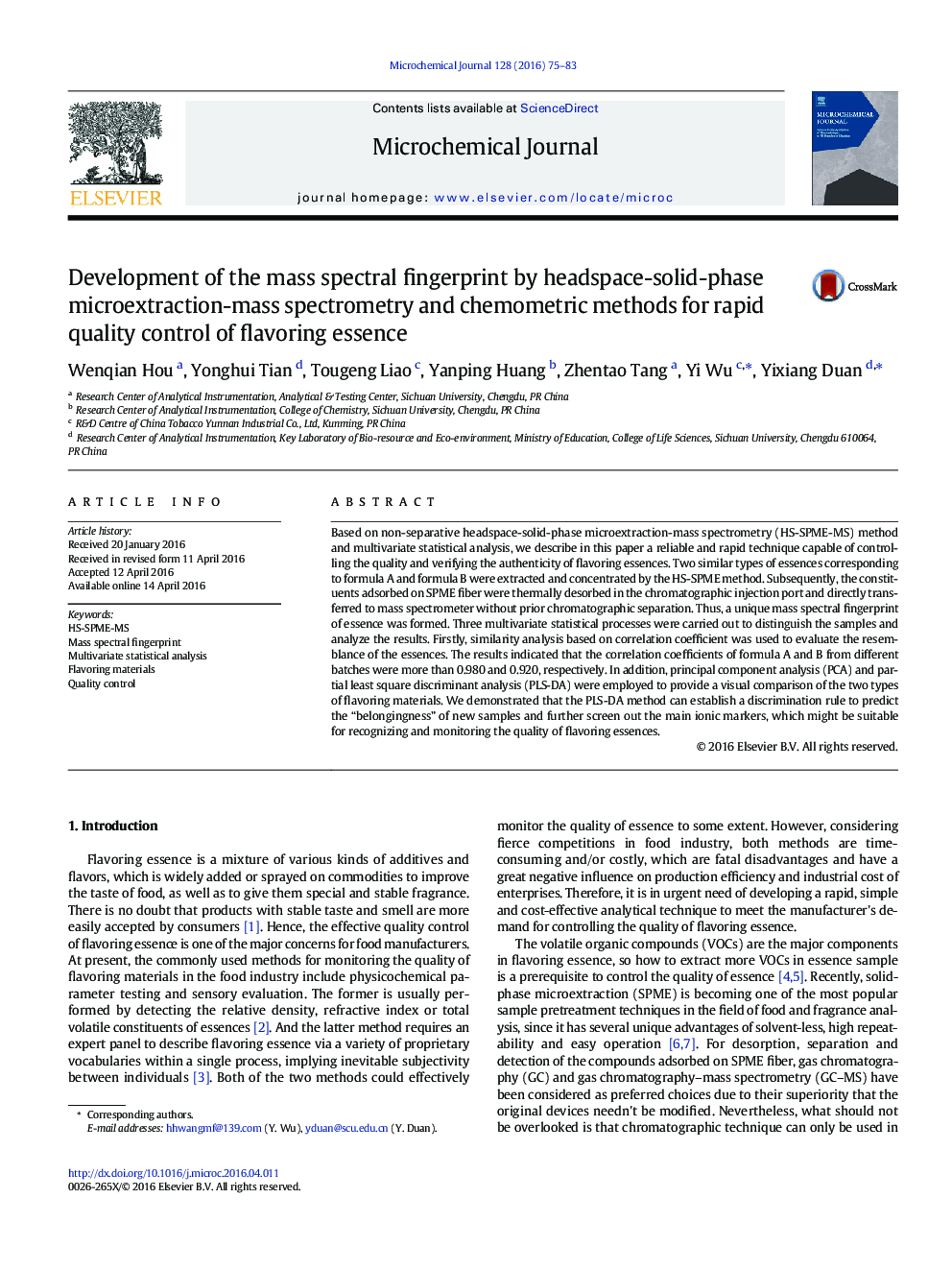| Article ID | Journal | Published Year | Pages | File Type |
|---|---|---|---|---|
| 1227543 | Microchemical Journal | 2016 | 9 Pages |
•A rapid method based on non-separative mass spectrometry (MS) technique is proposed to control the quality of flavoring essence.•The mass spectral fingerprint of the analyzed flavoring sample was obtained within 5 min.•The similarity analysis, principal component analysis (PCA), and partial least square discriminant analysis (PLS-DA) were successfully used to classify the two similar essences and recognize the adulterated samples.
Based on non-separative headspace-solid-phase microextraction-mass spectrometry (HS-SPME-MS) method and multivariate statistical analysis, we describe in this paper a reliable and rapid technique capable of controlling the quality and verifying the authenticity of flavoring essences. Two similar types of essences corresponding to formula A and formula B were extracted and concentrated by the HS-SPME method. Subsequently, the constituents adsorbed on SPME fiber were thermally desorbed in the chromatographic injection port and directly transferred to mass spectrometer without prior chromatographic separation. Thus, a unique mass spectral fingerprint of essence was formed. Three multivariate statistical processes were carried out to distinguish the samples and analyze the results. Firstly, similarity analysis based on correlation coefficient was used to evaluate the resemblance of the essences. The results indicated that the correlation coefficients of formula A and B from different batches were more than 0.980 and 0.920, respectively. In addition, principal component analysis (PCA) and partial least square discriminant analysis (PLS-DA) were employed to provide a visual comparison of the two types of flavoring materials. We demonstrated that the PLS-DA method can establish a discrimination rule to predict the “belongingness” of new samples and further screen out the main ionic markers, which might be suitable for recognizing and monitoring the quality of flavoring essences.
